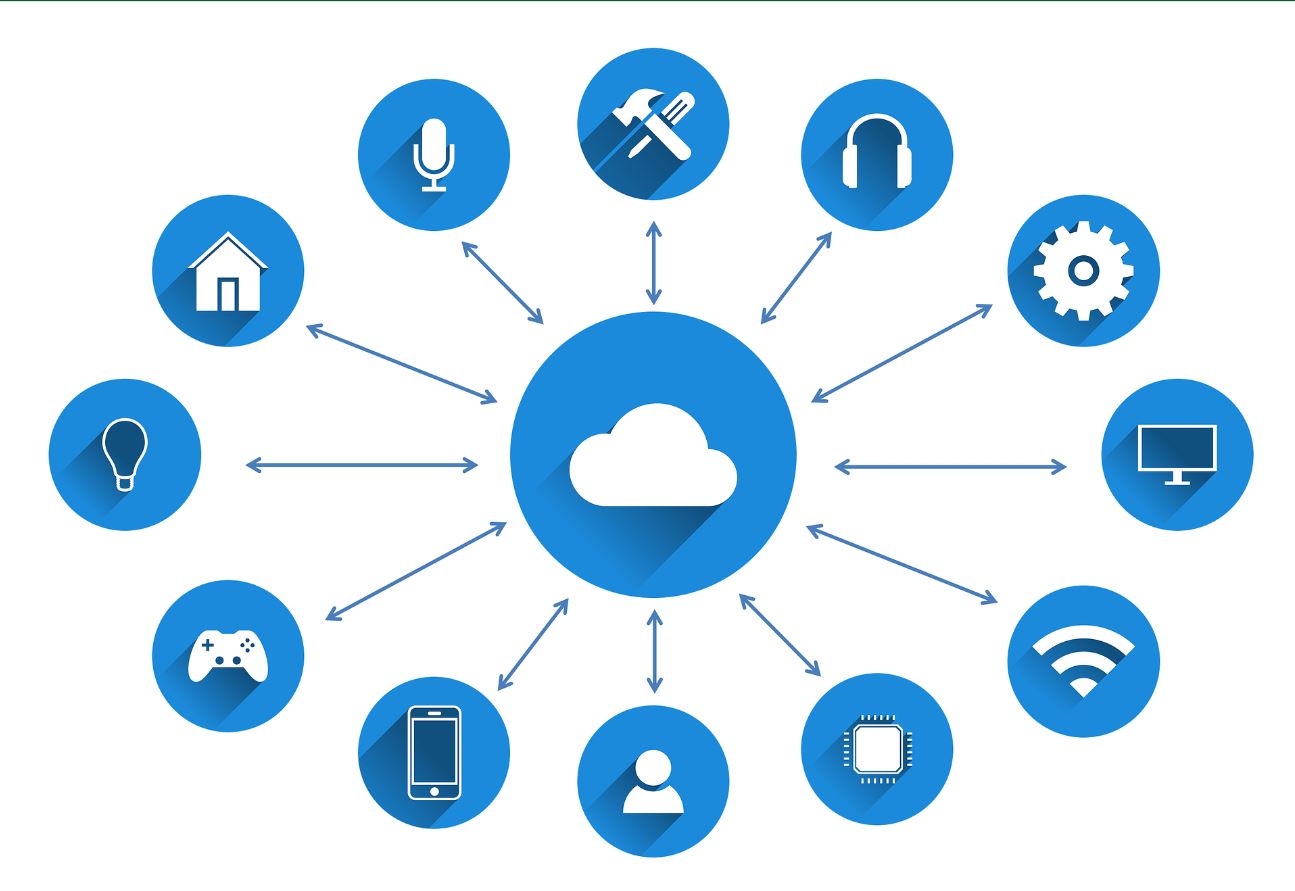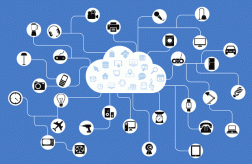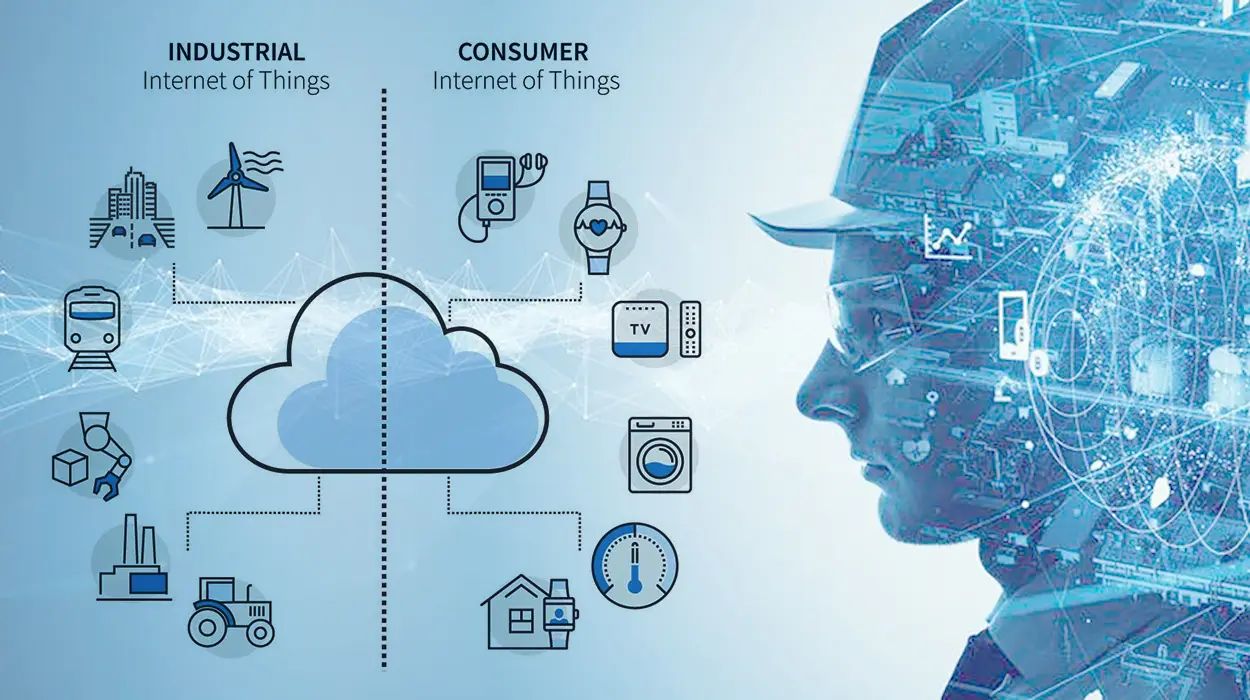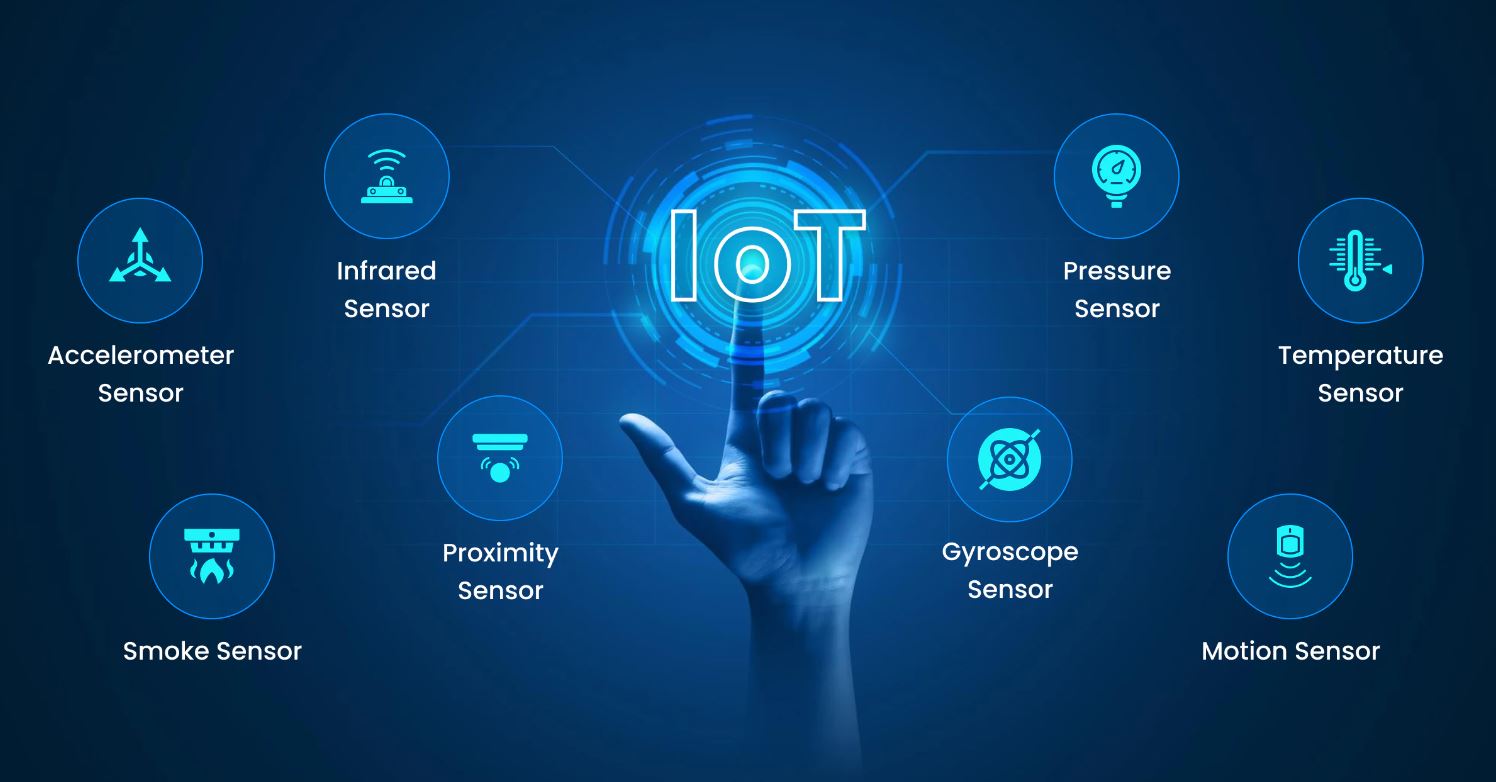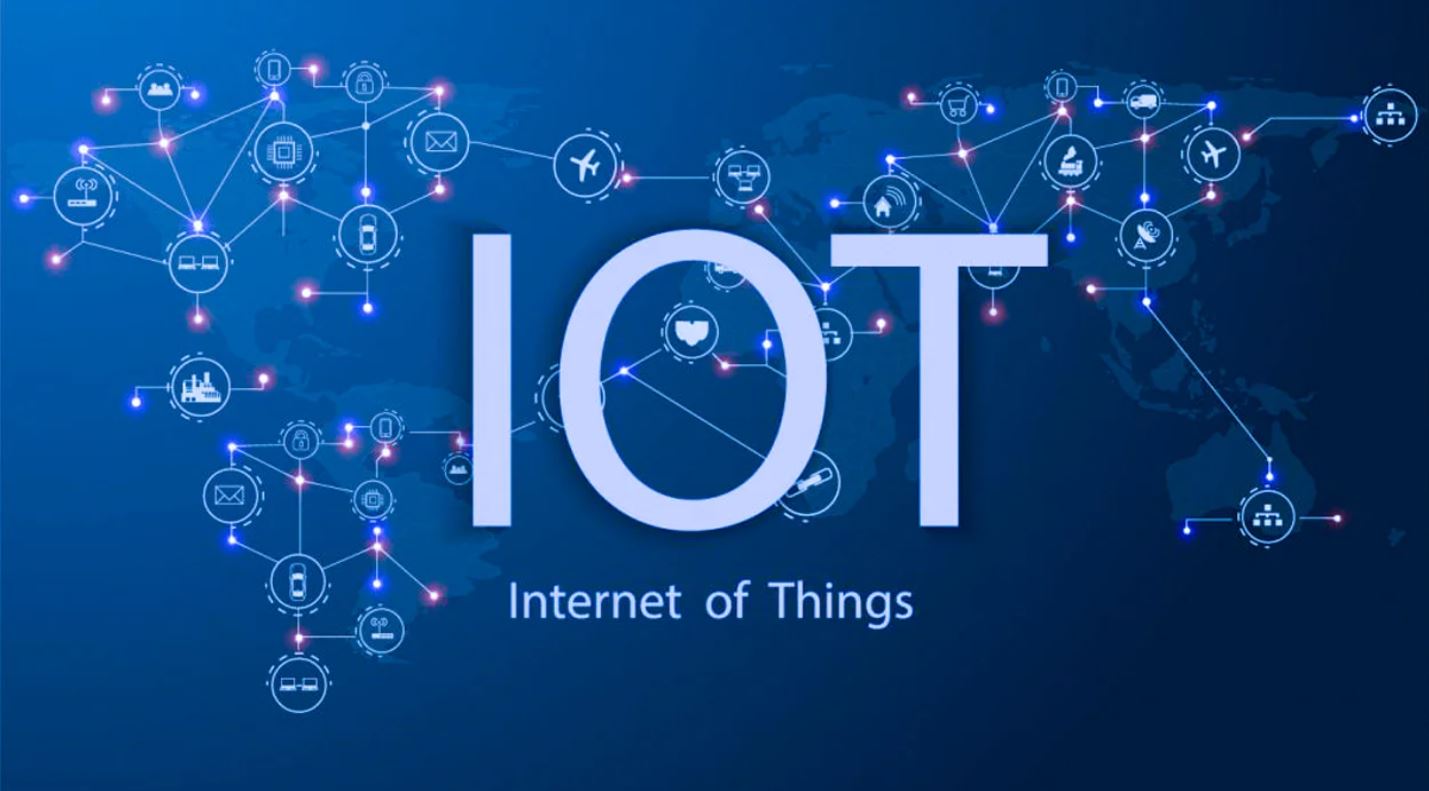Introduction
Welcome to the exciting world of the Internet of Things (IoT), where everyday objects are becoming interconnected and revolutionizing the way we live and work. The IoT is a network of physical devices, vehicles, appliances, and other objects embedded with sensors, software, and connectivity that enables them to collect and exchange data.
From smart thermostats and wearable fitness trackers to connected cars and industrial machinery, IoT devices are transforming various industries and our daily lives. But have you ever wondered how these devices actually connect to the internet? In this article, we will explore the various methods that IoT devices use to establish a connection.
IoT devices can connect to the internet through wired, wireless, cellular network, Wi-Fi, Bluetooth, Zigbee, Z-Wave, Thread, NFC, and other types of connections. Each method has its own advantages and use cases, depending on factors such as range, power consumption, data transfer speed, and security requirements. Let’s dive into the details to understand how these connections work.
What is IoT?
The Internet of Things (IoT) is a revolutionary concept that refers to the interconnection of everyday objects and devices with the internet, enabling them to collect and exchange data. These objects, also known as “smart” devices or “connected” devices, are embedded with sensors, software, and connectivity features that allow them to communicate with each other and with us.
The IoT ecosystem encompasses a wide range of devices across various industries, including home automation systems, healthcare devices, smart city infrastructure, industrial machinery, and more. These devices can be as simple as a smart light bulb or as complex as a self-driving car.
The key idea behind IoT is to enable devices to seamlessly communicate and share data, creating a network of interconnected devices that can make our lives easier, more efficient, and even safer. For example, a smart home setup can enable seamless control of lights, temperature, security systems, and other appliances through a smartphone or voice commands, enhancing convenience and energy efficiency.
Another example of IoT’s potential impact is in healthcare. Connected devices such as wearable fitness trackers and remote patient monitoring devices can collect real-time data on vital signs, activity levels, and medication adherence. This data can be analyzed to provide insights for preventive interventions and personalized healthcare.
Overall, IoT has the potential to transform industries, optimize processes, increase productivity, and enhance our quality of life. However, with the vast amount of data being generated and shared across IoT devices, there are also concerns about privacy, security, and data management. It is crucial to prioritize data protection and establish robust security measures to ensure the integrity and confidentiality of sensitive information.
Now that we have an understanding of what IoT is and its potential, let’s explore the various methods by which IoT devices connect to the internet.
How do IoT devices connect to the internet?
IoT devices utilize various methods to establish a connection to the internet, depending on factors such as range, power consumption, data transfer speed, and security requirements. Let’s explore some of the most common methods:
Wired Connection:
One of the simplest ways for IoT devices to connect to the internet is through a wired connection. This method involves connecting the device directly to a network router or modem using an Ethernet cable. While this method provides a reliable and secure connection, it may not be suitable for devices that require mobility or are located in remote areas.
Wireless Connection:
Wireless connections are widely used by IoT devices due to their convenience and flexibility. Wi-Fi is the most common wireless protocol used for IoT devices. These devices connect to a local Wi-Fi network, allowing them to access the internet and exchange data. Wi-Fi offers a good balance between speed, range, and power consumption, making it ideal for devices within a specific area.
Cellular Network Connection:
IoT devices can connect to the internet through cellular networks, just like smartphones. This method utilizes a built-in SIM card or an external cellular module to establish a connection. Cellular connectivity is advantageous when devices need to operate in remote or mobile environments where Wi-Fi coverage may be limited. However, it can be more costly and consume more power compared to other methods.
Bluetooth Connection:
Bluetooth is a short-range wireless technology that enables IoT devices to connect to each other and exchange data. While it primarily serves as a communication method between nearby devices, some IoT devices can utilize Bluetooth to connect to a smartphone or gateway that is connected to the internet. Bluetooth is commonly used for applications like smart home devices, wearables, and beacons.
Zigbee Connection:
Zigbee is a low-power wireless protocol specifically designed for IoT devices. It operates on the 2.4GHz frequency and allows devices to communicate with each other in a mesh network. Zigbee offers long battery life, low latency, and support for a large number of devices, making it suitable for applications like home automation, lighting control, and smart energy management.
Z-Wave Connection:
Z-Wave is another wireless protocol that enables IoT devices to connect and communicate with each other. Similar to Zigbee, Z-Wave operates in the 2.4GHz frequency and utilizes a mesh network topology. Z-Wave is known for its reliability, range, and interoperability, making it popular for home automation and security systems.
Thread Connection:
Thread is a wireless protocol that focuses on providing reliable and secure connectivity for IoT devices. It uses IPv6 addressing, allowing devices to have direct internet access. Thread utilizes low-power mesh networking and operates on the 2.4GHz frequency, making it suitable for energy-efficient devices and home automation systems.
NFC Connection:
Near Field Communication (NFC) is a short-range wireless technology that allows devices to establish a connection by bringing them close together. While NFC is commonly used for contactless payments and data transfer between smartphones, it can also be utilized by IoT devices to enable a quick and secure connection to the internet.
These are just a few examples of the methods by which IoT devices connect to the internet. The choice of connection method depends on the specific requirements and use case of the device. By leveraging these technologies, IoT devices can seamlessly communicate, collect data, and provide valuable insights for various industries and applications.
Wired Connection
One of the simplest and most reliable methods for IoT devices to connect to the internet is through a wired connection. This method involves connecting the device directly to a network router or modem using an Ethernet cable.
Wired connections provide a secure and stable connection, ensuring consistent and uninterrupted data transmission. The Ethernet cable, commonly known as a Cat5 or Cat6 cable, carries data signals between the IoT device and the router or modem. This connection method is widely used in homes, offices, and industrial settings where a reliable and high-speed connection is required.
IoT devices that are connected through a wired connection are assigned an IP address by the router or modem, allowing them to access the internet and exchange data. This connection type is particularly suitable for devices that require a constant and fast connection, such as security systems, surveillance cameras, or industrial monitoring devices.
Wired connections offer advantages such as low latency, high reliability, and protection from interference. Since the connection is established through a physical cable, factors like signal strength and range limitations are not a concern. Additionally, wired connections are not affected by other devices or environmental factors that may disrupt wireless signals.
However, wired connections also have limitations. One major drawback is the lack of mobility. IoT devices connected through a wired connection are typically stationary and cannot easily be moved around. Moreover, the installation process may require running cables through walls or ceilings, which can be time-consuming and costly.
Another consideration is the availability of Ethernet ports. While routers and modems usually have multiple Ethernet ports, there may be limitations on the number of devices that can be connected simultaneously. In such cases, the use of switches or hubs can expand the number of available ports and allow for more IoT devices to be connected.
In summary, a wired connection is a reliable and secure method for IoT devices to connect to the internet. It offers low latency, high reliability, and protection from interference. However, its lack of mobility and potential installation costs should be taken into account when determining the suitability of this connection method for specific IoT devices and applications.
Wireless Connection
Wireless connections are a popular and convenient method for IoT devices to connect to the internet. This method eliminates the need for physical cables, allowing devices to communicate and exchange data wirelessly.
One of the most common wireless protocols used for IoT devices is Wi-Fi. Wi-Fi allows devices to connect to a local network, typically provided by a wireless router, and access the internet. IoT devices with Wi-Fi connectivity can be controlled and monitored remotely through smartphones, tablets, or other devices connected to the same network.
Wireless connections offer flexibility and mobility, enabling IoT devices to be placed in various locations without the restrictions of wired connections. This makes them ideal for devices such as smart thermostats, smart speakers, or home security cameras that need to be placed in different areas of a home or building.
Wi-Fi connections provide advantages such as high data transfer speeds, a wide coverage range, and compatibility with a wide range of devices. However, there are factors to consider when using wireless connections for IoT devices. One such factor is signal strength and potential interference. The range of a Wi-Fi signal can be affected by physical barriers such as walls and furniture, as well as interference from other devices or neighboring networks. In cases where IoT devices are located far from the router or in a congested Wi-Fi environment, signal boosters or range extenders can be used to enhance connectivity.
Another consideration is power consumption. Wireless connections can consume more power compared to wired connections, as devices need to constantly transmit and receive data over the air. Energy-efficient design and power management techniques are essential for IoT devices utilizing wireless connections to optimize battery life and reduce power consumption.
It is also important to prioritize security when using wireless connections for IoT devices. Wi-Fi networks should be protected with strong encryption, such as WPA2, to prevent unauthorized access to the network and data. Additionally, IoT devices should be regularly updated with the latest firmware to ensure security patches and protection against vulnerabilities.
Other wireless protocols, such as Bluetooth, Zigbee, Z-Wave, Thread, and NFC, also offer connectivity options for IoT devices. These protocols have specific use cases and advantages, such as low-power consumption, mesh networking capabilities, or short-range communication. The choice of wireless connection depends on the specific requirements and use case of the IoT device.
In summary, wireless connections provide flexibility, mobility, and convenience for IoT devices to connect to the internet. While there are considerations regarding signal strength, power consumption, and security, the advantages of wireless connections make them widely used in various IoT applications.
Cellular Network Connection
Cellular network connection is another method by which IoT devices can connect to the internet. Similar to smartphones, IoT devices can utilize cellular networks to establish a connection, enabling them to send and receive data from anywhere with network coverage.
This method involves using a built-in SIM card or an external cellular module within the IoT device to connect to a cellular network provider. The device then communicates with the network using various cellular technologies, such as 2G, 3G, 4G, or even the emerging 5G network.
Cellular network connections are advantageous for IoT devices that require mobility or need to operate in remote areas where Wi-Fi connectivity may be limited. These devices can be installed in vehicles, delivery trucks, agricultural machinery, or environmental monitoring systems that require real-time data transmission while on the move.
One of the key benefits of cellular network connections for IoT devices is the wide coverage area provided by cellular networks. With a cellular connection, IoT devices can access the internet and exchange data in urban areas, rural areas, and even in areas where traditional wired connections are unavailable.
Additionally, cellular networks provide relatively high data transfer speeds, enabling IoT devices to transmit and receive large amounts of data efficiently. This is particularly beneficial for applications that involve video streaming, telemetry data, or remote diagnostics.
However, it’s important to consider the cost and power consumption associated with cellular network connections. Compared to other connection methods, cellular connectivity can be more expensive, as it requires a data plan from a cellular network provider. Power consumption is also a consideration, as maintaining a cellular connection can drain the device’s battery faster compared to other connection types.
Another consideration with cellular connections is the availability of network coverage. While cellular networks provide broad coverage, there can still be areas with weak signal strength or no coverage at all. IoT devices operating in such areas may experience connectivity issues or complete loss of connection.
Security is also a crucial aspect to consider when using cellular network connections for IoT devices. The use of encryption protocols and secure identification, such as IMSI (International Mobile Subscriber Identity) numbers, helps protect data transmitted over cellular networks and prevent unauthorized access.
In summary, cellular network connections offer the advantage of wide coverage and mobility, making them suitable for IoT devices that require connectivity in remote areas or on the move. While cost, power consumption, coverage limitations, and security considerations should be taken into account, cellular connections provide a reliable and convenient option for many IoT applications.
Wi-Fi Connection
Wi-Fi connection is one of the most popular and widely used methods for IoT devices to connect to the internet. It provides a wireless connection to a local network, typically through a wireless router, allowing devices to access the internet and exchange data.
IoT devices with Wi-Fi connectivity can connect to an existing Wi-Fi network in a home, office, or public hotspot. This connection method offers several advantages, including convenience, flexibility, and compatibility with a wide range of devices.
One of the key benefits of Wi-Fi connections for IoT devices is the flexibility it provides. Devices can be placed anywhere within the range of the Wi-Fi network without the need for physical cables. This is particularly useful for devices that require mobility or for applications where wired connections are impractical or impossible.
Wi-Fi connections also offer high data transfer speeds, enabling IoT devices to transmit and receive data quickly and efficiently. This is particularly important for devices that require real-time data processing, such as video streaming, home automation, or remote monitoring systems.
Moreover, Wi-Fi networks can easily be expanded to support multiple devices. A wireless router can accommodate numerous IoT devices simultaneously, allowing for seamless integration and control of smart home devices, wearable devices, and other connected appliances.
While Wi-Fi offers convenience and flexibility, there are also considerations to keep in mind. Wi-Fi signals are affected by physical barriers such as walls and furniture, as well as interference from other devices and neighboring networks. IoT devices located far from the router or in congested Wi-Fi environments may experience degraded signal strength and reliability.
Power consumption is another factor to consider with Wi-Fi connections. Transmitting and receiving data wirelessly consumes more power compared to some other connection methods, which can impact the battery life of IoT devices. Energy-efficient design and power management techniques are essential for maximizing the device’s battery life.
Security is a crucial aspect of Wi-Fi connections for IoT devices. It is important to secure the Wi-Fi network with a strong password and encryption protocol, such as WPA2, to prevent unauthorized access and protect the data being transmitted. Regularly updating the firmware of the connected IoT devices is also necessary to address security vulnerabilities.
Though there are considerations, Wi-Fi connections remain a popular choice for IoT devices due to their convenience, flexibility, and compatibility. With continuous advancements in Wi-Fi technology, including the upcoming Wi-Fi 6 standard, IoT devices will continue to benefit from improved speed, coverage, and overall performance.
Bluetooth Connection
Bluetooth connection is a short-range wireless technology that enables IoT devices to connect and communicate with each other. With Bluetooth, devices can establish a direct connection or connect to a smartphone or gateway that provides internet connectivity.
Bluetooth connections are commonly used for IoT devices that are located in close proximity to each other. This wireless technology eliminates the need for cables, making it convenient for applications like home automation, wearable devices, and personal area networks.
One of the major advantages of Bluetooth connections is the simplicity of pairing devices. Bluetooth devices can easily discover and connect to each other without requiring complex setup or configuration. This makes it user-friendly and accessible even for non-technical users.
Bluetooth connections also provide low power consumption, making it suitable for battery-powered IoT devices. This feature enables devices to operate for extended periods without needing frequent battery replacements.
Bluetooth connections operate in the 2.4GHz frequency band, which is globally available and unlicensed. However, this frequency band can be crowded due to the large number of devices operating in this range, including Wi-Fi routers, microwaves, and other Bluetooth devices. As a result, interference can occur, affecting the signal strength and reliability of Bluetooth connections.
Bluetooth has evolved over the years, and the latest version, Bluetooth Low Energy (BLE), further enhances power efficiency. BLE is designed specifically for IoT devices that require low power consumption and long battery life, such as wearable fitness trackers, smart sensors, and beacons.
One limitation of Bluetooth connections is the relatively short range. The range typically varies from a few meters to tens of meters, depending on the Bluetooth version and environmental conditions. IoT devices using Bluetooth connections may require close proximity to a hub or gateway that provides internet connectivity for accessing the internet.
Overall, Bluetooth connections offer convenience, ease of use, and low power consumption for IoT devices. While it has limitations in terms of range and potential interference, Bluetooth remains a popular choice for applications that require short-range wireless connectivity and compatibility.
Zigbee Connection
Zigbee connection is a wireless protocol designed specifically for IoT devices. It operates in the 2.4GHz frequency band and enables low-power, low-data-rate communications between devices. Zigbee provides a reliable and cost-effective solution for interconnected devices in various IoT applications.
Zigbee utilizes a mesh networking topology, where individual devices can communicate with each other, forming a network of interconnected devices. This mesh network allows IoT devices to transmit data through multiple routes, improving reliability and extending the network’s range.
One of the key advantages of Zigbee connections is their low power consumption. This makes it ideal for battery-powered IoT devices, such as smart home sensors, lighting systems, and energy management devices. Zigbee devices can operate for months or even years on a single battery, enhancing their longevity and reducing maintenance requirements.
Another advantage of Zigbee connections is the ability to support a large number of devices within a single network. Zigbee networks can accommodate hundreds or even thousands of devices, making it scalable for applications that require a large number of interconnected devices, such as smart cities or industrial automation.
Zigbee connections also offer fast response times and low latency, making them suitable for real-time applications. Devices can quickly communicate and relay information within the Zigbee network, allowing for near-instantaneous control and feedback in applications such as home automation or industrial monitoring.
Furthermore, Zigbee connections provide strong security features. The Zigbee protocol includes AES-128 encryption, ensuring secure communication between devices and protecting sensitive data from unauthorized access. This built-in security makes Zigbee a reliable choice for applications that require privacy and data protection.
However, Zigbee has a limited range compared to other wireless protocols. The range typically extends up to 10-100 meters, depending on the environment and the presence of physical obstacles. In larger deployments, Zigbee networks may require the use of routers or repeaters to extend the coverage area and ensure signal integrity.
Interoperability can also be a consideration with Zigbee connections, as there are different Zigbee profiles available. To ensure compatibility and seamless communication between devices from different manufacturers, it is important to select Zigbee-certified devices that adhere to the same Zigbee profile.
In summary, Zigbee connections provide a reliable, low-power, and cost-effective solution for IoT devices. With their mesh networking capabilities, low latency, strong security, and scalability, Zigbee connections are well-suited for applications that require long battery life, extensive device integration, and reliable communication.
Z-Wave Connection
Z-Wave connection is a wireless technology specifically designed for home automation and IoT devices. It operates in the sub-GHz frequency band, typically 868.42 MHz in Europe and 908.42 MHz in North America, providing reliable and secure communication between devices within a smart home network.
One of the key advantages of Z-Wave is its interoperability. Z-Wave devices from different manufacturers can seamlessly communicate with each other in a Z-Wave network. This allows users to mix and match devices from various brands, ensuring flexibility and compatibility when building a smart home ecosystem.
Z-Wave utilizes a mesh network topology, where devices act as repeaters to expand the coverage area of the network. This mesh network ensures that commands can be transmitted from one device to another, even if they are far apart, improving reliability and range. It also provides self-healing capabilities, where devices automatically find the most efficient communication routes if there are any disruptions in the network.
Another advantage of Z-Wave connections is their low power consumption. Z-Wave devices are designed to be energy-efficient, allowing for long battery life or low power draw from the mains. This efficiency enables devices such as smart sensors, smart locks, and lighting systems to operate for extended periods without frequent battery replacements.
Z-Wave connections offer high data transfer rates, enabling fast and responsive communication between devices. This is especially important for real-time applications, such as smart security systems or remote control of smart devices, where quick response times are crucial.
Security is a paramount concern for Z-Wave connections. Z-Wave incorporates AES-128 encryption, ensuring secure communication between devices and protecting sensitive data from unauthorized access. This built-in security feature provides peace of mind for users and safeguards their privacy within the smart home network.
It is worth noting that Z-Wave operates in a separate and dedicated frequency band, which reduces the chances of interference from other wireless devices. This dedicated frequency band, combined with mesh network capabilities, contributes to the reliability and stability of Z-Wave connections.
However, Z-Wave connections have a limited range compared to other wireless technologies. The range can vary depending on the specific conditions and the presence of physical obstacles. In larger homes or installations, Z-Wave networks may require the use of range extenders or repeaters to ensure connectivity throughout the entire space.
In summary, Z-Wave connections offer interoperability, low power consumption, high data transfer rates, and strong security for IoT devices within a smart home environment. With their mesh networking capabilities and compatibility among different brands, Z-Wave connections provide users with a reliable and flexible solution for building a connected and efficient home automation system.
Thread Connection
Thread connection is a wireless protocol designed specifically for IoT devices, particularly within the smart home domain. It offers low-power, reliable, and secure connectivity for devices that form part of a Thread network.
Thread operates on the 2.4GHz frequency band, the same as Wi-Fi and Bluetooth, and utilizes IPv6 addressing. This allows Thread devices to have direct internet access and communicate with each other, forming a mesh network. The mesh network topology ensures that data can be routed through multiple devices, extending the range and enhancing network reliability.
One of the major advantages of Thread connections is their low power consumption. Devices using Thread have efficient energy management, enabling them to conserve power and prolong battery life. This makes Thread suitable for battery-powered IoT devices, such as wireless sensors or smart locks, that need to operate for extended periods without frequent battery replacements.
Thread connections also provide fast response times and low latency, making them suitable for real-time applications within the smart home environment. Devices can quickly communicate, enabling seamless control of smart devices, real-time monitoring, or immediate response to changes in the environment.
Security is a key feature of Thread connections. Thread networks incorporate secure encryption and authentication mechanisms, ensuring that data transmitted within the network is protected from unauthorized access. This is especially important in smart home applications, where privacy and security of personal information are paramount.
Thread networks are highly scalable, supporting a large number of devices within a single network. This scalability makes Thread suitable for comprehensive smart home deployments, where numerous devices need to be interconnected and operate seamlessly together. Additionally, the interoperability of Thread devices allows for easy integration of devices from different manufacturers, providing flexibility and options for users.
Thread connections can coexist alongside other wireless technologies within a smart home environment, including Wi-Fi and Bluetooth. This enables integration with existing networks and devices, creating a comprehensive ecosystem of interconnected devices.
However, it is important to note that Thread connections may require specific hardware support or dedicated Thread-enabled devices to fully utilize the benefits of the protocol. Additionally, while Thread supports IPv6 addressing, it may not directly connect to the wider internet, necessitating the use of a gateway device to bridge the Thread network and the internet.
In summary, Thread connections provide low-power, reliable, and secure connectivity for IoT devices within the smart home ecosystem. With their mesh network topology, low latency, and strong security features, Thread is an excellent choice for creating comprehensive and interoperable smart home environments.
NFC Connection
NFC (Near Field Communication) connection is a short-range wireless technology that enables devices to establish a communication link by bringing them close together. NFC is commonly used for contactless payments, mobile ticketing, and data exchange between smartphones. However, it can also be utilized by IoT devices to enable quick and seamless connections.
NFC operates at a frequency of 13.56 MHz and provides a secure and relatively simple method of communication. To establish an NFC connection, devices need to be within a close proximity, typically a few centimeters apart.
One of the key advantages of NFC connections is their simplicity and ease of use. Devices equipped with NFC technology can quickly and easily connect with each other by simply touching or placing them close together. This makes NFC particularly suitable for situations where a fast and convenient connection is required, such as pairing IoT devices with smartphones or initiating data transfer.
NFC connections offer fast and reliable communication, enabling devices to exchange information within a short span of time. This is useful for IoT devices that need to quickly transmit small amounts of data, such as identification information, transaction details, or configuration settings.
Security is a crucial aspect of NFC connections. NFC employs a secure element technology that ensures secure communication between devices, providing protection against unauthorized access and data tampering. This makes NFC connections suitable for applications that involve sensitive data, such as access control systems or secure transactions.
NFC has a relatively short range, typically requiring devices to be in close proximity to establish a connection. While this limits the range of NFC-enabled IoT devices, it also provides an added layer of security, as physical proximity is required for communication to occur.
NFC connections are well-suited for IoT devices in specific use cases, such as home automation or smart packaging. For example, NFC-enabled smart locks can be easily paired with smartphones for secure access control, or NFC-enabled smart tags on product packaging can provide interactive experiences or access to additional information.
It is important to note that NFC connections require compatible NFC technology in both the IoT device and the connecting device, such as smartphones or NFC readers. However, NFC is widely supported in modern smartphones and has become increasingly prevalent in various IoT devices.
In summary, NFC connections provide a fast, secure, and simple method for IoT devices to establish communication with other devices. While their short range limits the scope of applications, NFC is well-suited for use cases that require proximity-based connections and secure data transfer, making it a valuable wireless technology for IoT devices.
Conclusion
The various methods by which IoT devices connect to the internet offer flexibility, reliability, and convenience, allowing for seamless communication and data exchange. Wired connections provide a secure and stable connection, while wireless connections, such as Wi-Fi, Bluetooth, Zigbee, Z-Wave, Thread, and NFC, offer flexibility and mobility for different IoT applications.
Each connection method has its own advantages and considerations. Wired connections are reliable but lack mobility, while wireless connections provide flexibility at the expense of potential range limitations and interference. Cellular network connections offer wide coverage but can be more costly and power-consuming, and NFC connections enable quick and secure connections within a close proximity.
Overall, the choice of connection method depends on the specific requirements of the IoT device, such as range, power consumption, data transfer speed, and security concerns. It is important to consider these factors when selecting the appropriate connection method for a given IoT application or use case.
As the Internet of Things continues to evolve and expand, connectivity plays a vital role in enabling the seamless operation of IoT devices and the exchange of valuable data. Understanding the different connection methods available for IoT devices is crucial for developers, manufacturers, and consumers to make informed decisions and create innovative solutions that drive the future of IoT.
With the rapid advancement of technology and the ever-increasing number of connected devices, it is clear that IoT is transforming various industries and reshaping the way we live and work. By harnessing the power of these connection methods, IoT devices are becoming even more integrated into our daily lives, improving efficiency, convenience, and overall experiences.
As we look to the future, it is essential to prioritize security, interoperability, and energy efficiency in IoT connectivity. With continued innovation and collaboration, the connectivity landscape for IoT devices will continue to expand, enabling new possibilities and driving the growth of the Internet of Things.







